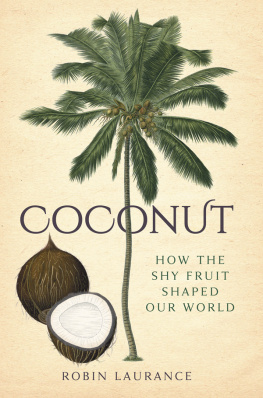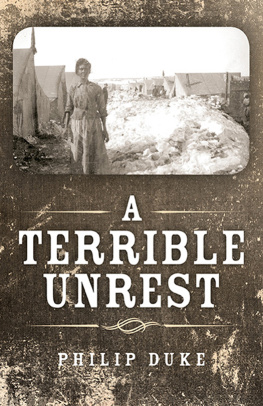Contents
Guide

For Aileen

First published 2019
The History Press
The Mill, Brimscombe Port
Stroud, Gloucestershire, GL5 2QG
www.thehistorypress.co.uk
Robin Laurance, 2019
The right of Robin Laurance to be identified as the Author of this work has been asserted in accordance with the Copyright, Designs and Patents Act 1988.
All rights reserved. No part of this book may be reprinted or reproduced or utilised in any form or by any electronic, mechanical or other means, now known or hereafter invented, including photocopying and recording, or in any information storage or retrieval system, without the permission in writing from the Publishers.
British Library Cataloguing in Publication Data.
A catalogue record for this book is available from the British Library.
ISBN 978 0 7509 9273 2
Typesetting and origination by The History Press
Printed and bound in Great Britain by TJ International Ltd.
eBook converted by Geethik Technologies

CONTENTS
PROLOGUE
Imagine, if you will, a baronial hall with a huge open fire, burning logs from the estate. The logs crackle and spit onto the flagstone hearth. Deep leather armchairs and a couple of settees piled with cushions invite a pleasant dalliance an invitation enhanced by the goblets and decanters of red wine that line the dark, Jacobean sideboard with its finely turned legs.
Let not your imagination be constrained by the passage of time, as into this convivial environment comes an unlikely collection of men and women, from times past and times present, who seemingly have little in common. Yet within minutes they are engrossed in each others stories and the conversations sparkle in company with the energy of the open fire.
Here is William Hesketh Lever (Lord Leverhulme) the Bolton-born soap king of post-industrialised Britain. Next to him is a diminutive Vietnamese monk of uncertain age known to his followers as Dao Dua. Here too is William Wilson, a Scot aka Edward Price, who made candles for Buckingham Palace. Joining them comes Louis Fieser who had been an organic chemist at Harvard University where, with a degree of soul-searching, he invented napalm. Then comes the bearded German nudist August Engelhardt who as it happens studied physics rather than chemistry. He still has the look of a bohemian student about him, but in deference to his fellow guests, is wearing clothes. Imelda Marcos, the former first lady of the Philippines, is wearing shoes which she will have selected carefully and laboriously for the occasion: she had 1,600 pairs to choose from.
You may be tempted to avert your gaze from the disgraced man handcuffed to a prison warder. But examine this man without flinching: his story is shameful but rather extraordinary. And if you dont recognise Captain William Bligh from The Bounty, no matter. What matters is that there was something about the 1789 mutiny on his ship you dont know, and he will certainly want you to know. He will have a satisfied-looking auctioneer from Christies in tow. The French Enlightenment philosopher Voltaire will be espousing the merits of the British legal system to all the other Anglophiles in the room. From China come the white-gloved drivers of Shanghais electric buses.
A cluster of devout Hindus from Kerala in southern India will indulge in quiet exchanges with Catholic farmers from the Philippines. Silversmiths from Antwerp and Augsburg will discuss their trade. A young John F. Kennedy in his naval lieutenants uniform will be recalling his adventures in the South Seas during the Second World War. William Procter and James Gamble will turn up if their steamship makes it across the Atlantic, and Robert Pearce will speed through the Channel Tunnel from southern France where the worlds largest experimental fusion reactor is under construction. Two friends, the sons of Errol Flynn and John Steinbeck, will reminisce about the Vietnam War.
The portly bespectacled French chemist Michel Chevreul, whose name is inscribed on the Eiffel Tower (together with those of Frances seventy-two other leading scientists) will be recalling his lifes story spanning 101 years for anyone who will listen. And two horses without legs will clip-clop towards any hand offering sugar lumps. There will be many others too, but you will have no trouble in hearing above the general chatter what it is that these men and women have in common. And the goblets on that Jacobean sideboard provide the answer if doubts remain.
The wine goblets are fashioned from coconuts, and coconuts are what these people have in common. Coconuts have shaped the lives of some of them, while the others have used coconuts to shape profoundly the lives of others. No plant, nor any group of plants, has had a part in so many and such diverse areas of human activity as the venerable coconut. The current craze for coconut-based health foods and beauty products is just the latest manifestation of this remarkable plants contribution to the lives of Homo sapiens. And doubtless in fifty years from now it will have become indispensable in those areas of human enquiry so far blind to the coconuts seemingly endless potential to be the answer.
1
SEX AND MUTINY
T o botanists the coconut palm is the Cocos nucifera, a member of the Arecaceae or palm family. And the seed (or fruit) is strictly not a nut but a drupe, a fleshy fruit in the same family as the cherry and plum. Cocos probably comes from coco, the Spanish and Portuguese word for grinning face apparent in the face-like markings at the base of the hairy nut. Coconuts have been around longer than Homo sapiens, but where exactly the coconut palm began life is still a matter of conjecture amongst botanists and historians. The oldest coconut fossils, found in Gujarat, Indias most westerly state, date back to the Eocene period some 37 million years ago a period when dormice, hedgehogs and rhinoceroses, orchids and delicate lilies were already in evidence.
Writings in Sanskrit refer to coconut oils being used in Ayurvedic medicine 3,500 years ago. Coconuts appear again in the Hindu epic story of Shri Rama written in the Sanskrit language a thousand years later and known as the Ramayana. And the Arabic folk tales of One Thousand and One Nights include the seven voyages of Sinbad the Sailor, whose crew throw stones at monkeys who retaliate by throwing down coconuts which the sailors promptly sell to finance their next voyage. (Monkeys, mostly pig-tailed macaques, are trained today throughout southeast Asia to assist with the coconut harvest, proving at least twice as efficient as their human counterparts at tossing the nuts to the ground, but troubling animal rights campaigners as they do so.)
The Song of Solomon, that celebration of love and sex which appears in the Old Testament of the Christian Bible and in the last section of the Hebrew Bible, the Tanakh, likens the womans body to the coconut palm: How beautiful and how delightful you are, My love, with all your charms! Your stature is like a palm tree. And your breasts are like its clusters.













